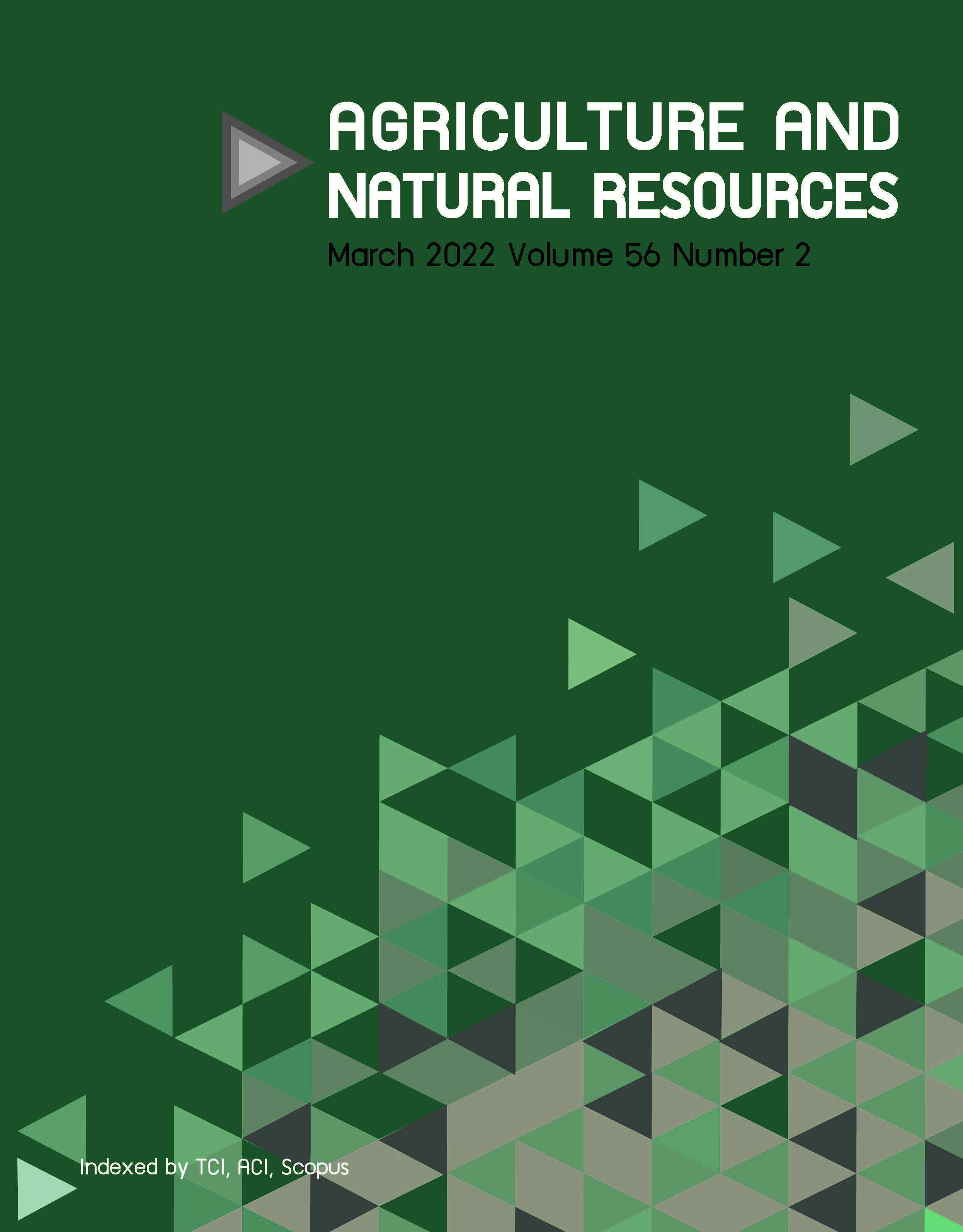Effect of pineapple stem starch in concentrate diet on rumen fermentation in beef cattle and in situ dry matter degradability
Keywords:
Beef cattle, In situ degradability, Pineapple stem starch, Rumen fermentationAbstract
Importance of the work: Pineapple is one of the major crops grown in Thailand. Pineapple stem starch is a potential byproduct from the bromelain enzymes extraction process with pineapple stems used as feedstuff for ruminants. However, the rumen fermentation and dry matter digestibility of pineapple stem starch has not been reported.
Objectives: To evaluate the rumen fermentation characteristics and dry matter digestibility of pineapple stem starch.
Materials & Methods: Four ruminal-cannulated beef cattle were used to determine the effects of the starch in four feed ingredients on the fractional degradation rates, ruminal degradability of dry matter (DM) and fermentation products. Animals were offered a basal diet containing 40% starch source with either ground corn (GC), broken rice (BR), ground cassava (CA) or pineapple stem starch (PS) as treatment concentrates, supplemented with Napier grass silage (NS) as roughage sources. Each animal was offered 1.2% DM concentrate based on animal bodyweight with 4 kg DM of NS. A 4×4 Latin squared design was used. Non-linear regression was used to fit an asymptotic exponential model on the degradation kinetics of the dry matter loss percentage of the four substrates against the time of incubation.
Results: Dry matter intake, ruminal pH and ammonia-nitrogen (NH3-N) were not affected by the starch source. PS and CA had higher total short-chain fatty acid concentrations than GC and BR. Ruminal digestibility of the concentrate diet was greater for PS compared to GC at 4–24 hr post-incubation (p < 0.05). However, CA produced more lactate and influenced the rate of disappearance in NS. PS had higher ruminal digestibility of the concentrate diet than in either BR or GC (p < 0.05).
Main finding: The results suggested that PS had potential as a starch source in a ruminant diet without any negative effects on feed intake or rumen fermentation.
Downloads
Published
How to Cite
Issue
Section
License
Copyright (c) 2022 Kasetsart Universityonline 2452-316X print 2468-1458/Copyright © 2022. This is an open access article under the CC BY-NC-ND license (http://creativecommons.org/licenses/by-nc-nd/4.0/),
production and hosting by Kasetsart University of Research and Development Institute on behalf of Kasetsart University.







